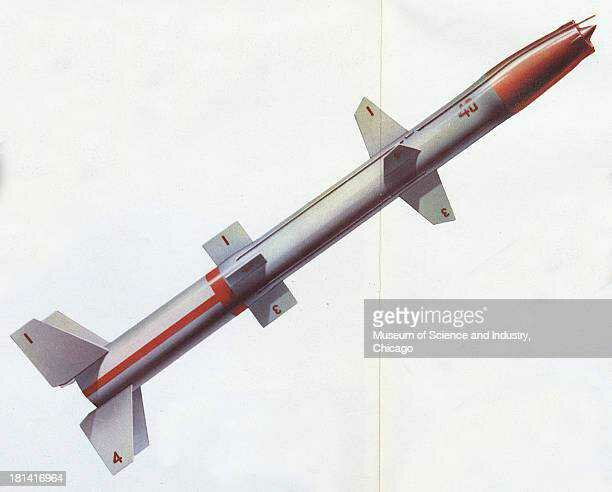Dilandu
I'm dissatisfied, which means, I exist.
It is well-known, that RIM-2 "Terrier" surface-to-air missile - forebear of the whole "Standard" missile family - was a bit... accidental product. It was developed as byproduct of "Bumblebee" research program, that created long-range RIM-8 "Talos" missile. To better understand the problematic of controlled supersonic flight, Applied Physics Lab of the John Hopkins University developed several test vehicles; one of which was supersonic solid-fuel STV (Supersonic Test Vehicle) for beam-riding guidance system. It proven itself exceptionally well, and when it became apparent, that "Bumblebee" program is more complex than originally expected, Navy decided to develop a simpler missile on the base of STV. And so RIM-2 "Terrier" was born.
But what if it wasn't?
There were a lot of possible divergence points, that could kill the "Terrier" before it was even born. Engineers of Applied Physics Lab may decide that solid-fuel rocket is not powerful enough, and develop STV with liquid-fuel engine. STV itself might just be designed over-complicated and not reliable enough. Or, Navy high ranks could just have a bad day, and dismiss the whole idea of "interim" missile as impractical - only diverting resources from "Bumblebee" project.
So, let's imagine that "Terrier" was never born. How it would affect the history of US Navy SAM?
I suppose, in 1950s, in lieu of lack of alternatives, the USN would adopt SAM-N-8 "Zeus" fin-stabilized gun-launched guided shell as main air defense system. While it was obviously less capable than "proper" guided missile, it still have advantages in much higher fire rate & reliance on proven gun technologies. The long-range air defense would be solely covered by "Talos", which would be the ubiquitous SAM of USN by late 1950s. I suppose, that significantly large number of WW2-era gun cruisers would be refitted into "Talos" & "Zeus" carriers (presumably, with "Talos" SAM system on rear, and 1-2 autoloading 8-inch RF turrets on bow)
But what would become of it by 1959-1960?
* "Zeus" shell would clearly reach the limit of its development; no modernization would make it capable of competing with supersonic aircraft and anti-ship missiles.
* "Talos" would still have its rate-of-fire and complexity limitation, which would preclude it from being used as self-defense and short-range defense weapon.
* Neither of those systems would actually fit well on small (destroyer-size) ships - albeit it is possible that single-barrel 8-inch RF mount would be developed to provide destroyers with "Zeus" capability.
So, what would be next?
But what if it wasn't?
There were a lot of possible divergence points, that could kill the "Terrier" before it was even born. Engineers of Applied Physics Lab may decide that solid-fuel rocket is not powerful enough, and develop STV with liquid-fuel engine. STV itself might just be designed over-complicated and not reliable enough. Or, Navy high ranks could just have a bad day, and dismiss the whole idea of "interim" missile as impractical - only diverting resources from "Bumblebee" project.
So, let's imagine that "Terrier" was never born. How it would affect the history of US Navy SAM?
I suppose, in 1950s, in lieu of lack of alternatives, the USN would adopt SAM-N-8 "Zeus" fin-stabilized gun-launched guided shell as main air defense system. While it was obviously less capable than "proper" guided missile, it still have advantages in much higher fire rate & reliance on proven gun technologies. The long-range air defense would be solely covered by "Talos", which would be the ubiquitous SAM of USN by late 1950s. I suppose, that significantly large number of WW2-era gun cruisers would be refitted into "Talos" & "Zeus" carriers (presumably, with "Talos" SAM system on rear, and 1-2 autoloading 8-inch RF turrets on bow)
But what would become of it by 1959-1960?
* "Zeus" shell would clearly reach the limit of its development; no modernization would make it capable of competing with supersonic aircraft and anti-ship missiles.
* "Talos" would still have its rate-of-fire and complexity limitation, which would preclude it from being used as self-defense and short-range defense weapon.
* Neither of those systems would actually fit well on small (destroyer-size) ships - albeit it is possible that single-barrel 8-inch RF mount would be developed to provide destroyers with "Zeus" capability.
So, what would be next?




